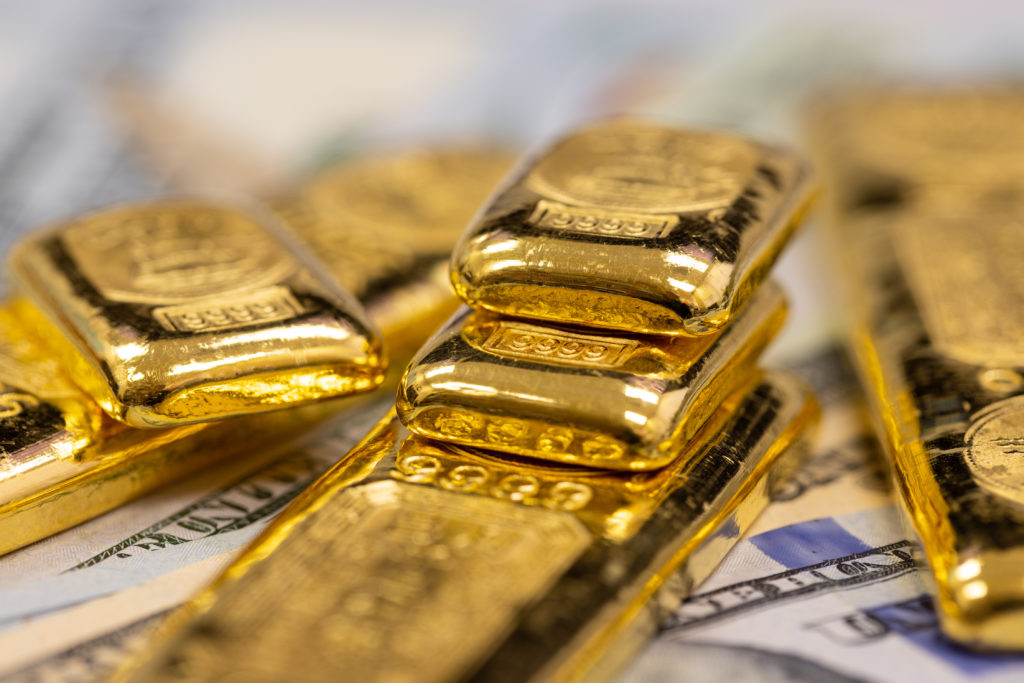Gold has always been regarded as a safe-haven asset. Throughout history, it has demonstrated resilience, particularly during times of economic uncertainty and geopolitical tension. However, as we approach 2025, the factors driving gold’s price are expected to evolve, influenced by a combination of market conditions, economic shifts, and geopolitical tensions. In this article, we will explore expert predictions on what will influence gold’s price in 2025, how market conditions are shaping its trajectory, and what role geopolitical factors will play in determining gold’s future value.
Experts Share Their Views on the Primary Factors Influencing Gold Prices in 2025
Gold’s price movements are inherently influenced by a variety of factors. Some are well-known, such as inflation rates, interest rates, and the performance of the U.S. dollar. Others, however, are more complex, including geopolitical tensions, technological innovations in mining, and evolving consumer demand. Experts agree that several key factors will dominate gold’s price movements in 2025, and understanding these forces will be crucial for both investors and those seeking to protect their wealth.
1. Inflation and Interest Rates
Inflation remains one of the most powerful drivers of gold’s price. When inflation rises, the purchasing power of fiat currencies decreases, and people often seek tangible assets like gold to hedge against these losses. As a result, gold tends to perform well during periods of high inflation.
In 2025, inflation is expected to remain a significant concern. Although central banks like the Federal Reserve may try to contain inflation through interest rate hikes, experts suggest that the global inflationary pressures from the pandemic, supply chain disruptions, and other factors will keep inflation levels elevated. This could further boost demand for gold, particularly if investors view it as a safer store of value compared to cash or other assets.
Interest rates, too, will play a critical role. When interest rates are low, gold tends to benefit because it does not offer any yield, making it a more attractive option relative to other interest-bearing assets like bonds or savings accounts. However, if interest rates rise substantially to combat inflation, it could have a dampening effect on gold prices. Experts predict that by 2025, the central banks of key economies will likely maintain a delicate balance, trying to curb inflation without causing excessive damage to economic growth.
2. Global Economic Growth and Recession Fears
Global economic growth will also be a major factor in determining gold’s price in 2025. As the world continues to recover from the aftermath of the COVID-19 pandemic, economic growth projections for 2025 are somewhat uncertain. While some regions, particularly in Asia, may experience robust growth, other areas could face challenges related to high debt levels, labor shortages, and inflationary pressures.
If the global economy enters a period of slow growth or even recession in 2025, investors are likely to seek out safe-haven assets like gold. Gold has historically performed well during economic downturns, as it retains its value when other asset classes, such as equities, struggle.
On the other hand, if the global economy experiences a strong recovery, demand for gold may be tempered as investors move towards riskier assets like stocks and corporate bonds. However, given the uncertainty in global markets, many analysts believe that gold will remain a key asset class for diversification and wealth preservation, especially if recession fears persist.
3. Supply Chain Disruptions and Mining Challenges
The supply side of gold’s price equation is also poised to play a crucial role in determining gold’s price in 2025. While gold is abundant in the earth’s crust, extracting it remains a complex and expensive process. In recent years, mining companies have faced various challenges, from rising labor costs to stricter environmental regulations, which have hindered supply growth.
Furthermore, disruptions in global supply chains, as seen during the pandemic, have impacted the mining industry, slowing production and adding pressure to gold’s supply. Experts predict that gold production in 2025 could face similar challenges, particularly as new mining projects take longer to develop. These factors could constrain the supply of gold, potentially pushing prices higher.
Additionally, technological advances in mining, such as automation and more efficient extraction methods, could help alleviate some of these challenges. However, these technologies are still in the early stages of implementation and are unlikely to make a significant impact on gold production before 2025. As such, gold’s supply may continue to struggle to keep pace with demand, further contributing to higher prices.

Analyzing Market Conditions, Geopolitical Tensions, and Economic Shifts
While economic conditions will certainly influence gold’s price in 2025, geopolitical factors are also critical to consider. Geopolitical risks, such as military conflicts, trade wars, and political instability, can send shockwaves through global markets and cause investors to flock to gold as a safe haven.
1. Geopolitical Tensions and Their Impact on Gold
Geopolitical tensions have historically been a major catalyst for surges in gold prices. For instance, during the Gulf War, the 9/11 attacks, and the ongoing conflict between Russia and Ukraine, gold prices spiked as investors sought safety from geopolitical uncertainty. In 2025, experts predict that several global hotspots—such as the ongoing tensions in Ukraine, the U.S.-China trade relationship, and potential conflicts in the Middle East—could continue to influence gold’s price.
If any of these situations escalate into more significant conflicts, gold could see a sharp increase in demand as a hedge against instability. Additionally, gold is often seen as a store of value during periods of political uncertainty, especially when the stability of fiat currencies is questioned.
Moreover, the rise of new geopolitical dynamics, such as the growing influence of China and the shifting global balance of power, may also contribute to increased interest in gold as countries and investors seek to protect their assets in the face of evolving global challenges.
2. The Role of Central Banks and Gold Reserves
Central banks play a key role in influencing gold prices. Many countries hold gold as part of their foreign exchange reserves, and their purchasing behavior can significantly impact gold’s value. In recent years, several central banks, particularly those in emerging markets, have increased their gold reserves as a means of diversifying their assets and reducing reliance on the U.S. dollar.
In 2025, experts predict that central banks in countries like China, Russia, and India will continue to build their gold reserves, which could put upward pressure on gold prices. This trend is also tied to the geopolitical risks mentioned earlier, as countries seek to reduce their exposure to the U.S. dollar and safeguard their assets in the event of a global crisis.
3. Technological Innovations and Consumer Demand
In addition to economic and geopolitical factors, technological innovations in sectors like jewelry, electronics, and renewable energy could influence gold demand in 2025. For instance, the increasing use of gold in consumer electronics, such as smartphones, computers, and electric vehicles, could contribute to higher demand for gold.
Moreover, the luxury sector’s growing interest in sustainable and ethically sourced gold jewelry is likely to drive demand in the coming years. Millennials and Gen Z consumers, in particular, are placing increasing emphasis on ethical consumption, pushing brands to adopt environmentally friendly sourcing and manufacturing practices. This, in turn, could increase the value of gold jewelry and, by extension, drive gold prices higher.
Conclusion: What to Expect for Gold’s Price in 2025
As we look ahead to 2025, it is clear that several key factors will influence the price of gold. Inflation, interest rates, global economic growth, and supply chain challenges will all play a critical role in determining gold’s price trajectory. However, geopolitical risks, central bank behavior, and consumer demand for sustainable gold will also contribute to price movements.
Experts agree that, despite potential volatility, gold will remain a key asset for wealth preservation and diversification. Whether investors are concerned about inflation, recession fears, or geopolitical instability, gold’s status as a safe-haven asset is unlikely to diminish in 2025. For those looking to invest in gold, understanding the economic and geopolitical factors at play will be crucial to making informed decisions and maximizing returns.



































